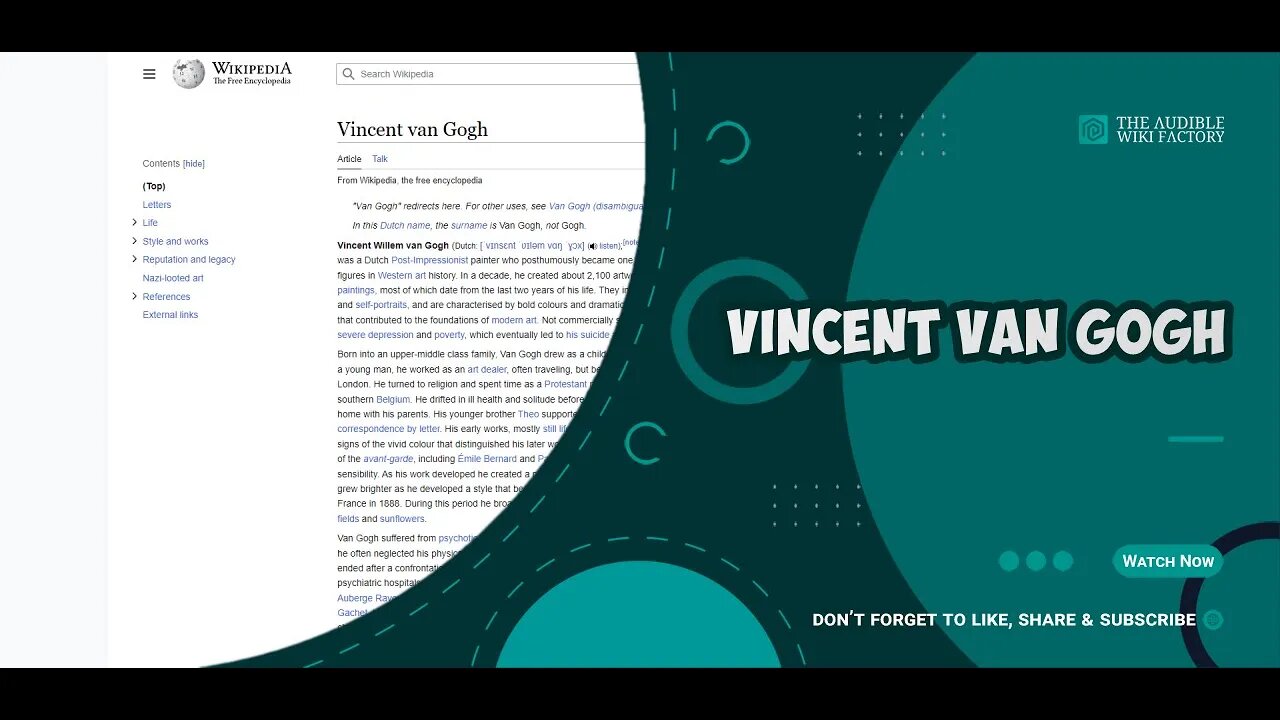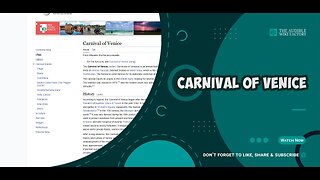Premium Only Content

Vincent Willem van Gogh was a Dutch Post-Impressionist painter who posthumously became one of
Vincent Willem van Gogh was a Dutch Post-Impressionist painter who posthumously became one of the most famous and influential figures in Western art history. In a decade, he created about 2,100 artworks, including around 860 oil paintings, most of which date from the last two years of his life. They include landscapes, still lifes, portraits and self-portraits, and are characterised by bold colours and dramatic, impulsive and expressive brushwork that contributed to the foundations of modern art. Not commercially successful in his career, he struggled with severe depression and poverty, which eventually led to his suicide at age thirty-seven.
Born into an upper-middle class family, Van Gogh drew as a child and was serious, quiet, and thoughtful. As a young man, he worked as an art dealer, often traveling, but became depressed after he was transferred to London. He turned to religion and spent time as a Protestant missionary in predominantly Roman Catholic southern Belgium. He drifted in ill health and solitude before taking up painting in 1881, having moved back home with his parents. His younger brother Theo supported him financially; the two kept a long correspondence by letter. His early works, mostly still lifes and depictions of peasant labourers, contain few signs of the vivid colour that distinguished his later work. In 1886, he moved to Paris, where he met members of the avant-garde, including Émile Bernard and Paul Gauguin, who were reacting against the Impressionist sensibility. As his work developed he created a new approach to still lifes and local landscapes. His paintings grew brighter as he developed a style that became fully realised during his stay in Arles in the South of France in 1888. During this period he broadened his subject matter to include series of olive trees, wheat fields and sunflowers.
Van Gogh suffered from psychotic episodes and delusions and though he worried about his mental stability, he often neglected his physical health, did not eat properly and drank heavily. His friendship with Gauguin ended after a confrontation with a razor when, in a rage, he severed part of his own left ear. He spent time in psychiatric hospitals, including a period at Saint-Rémy. After he discharged himself and moved to the Auberge Ravoux in Auvers-sur-Oise near Paris, he came under the care of the homeopathic doctor Paul Gachet. His depression persisted, and on 27 July 1890, Van Gogh is believed to have shot himself in the chest with a revolver, dying from his injuries two days later.
Van Gogh was commercially unsuccessful during his lifetime, and he was considered a madman and a failure. As he became famous only after his suicide, he came to be seen as a misunderstood genius in the public imagination. His reputation grew in the early 20th century as elements of his style came to be incorporated by the Fauves and German Expressionists. He attained widespread critical and commercial success over the ensuing decades, and is remembered as an important but tragic painter whose troubled personality typifies the romantic ideal of the tortured artist. Today, Van Gogh's works are among the world's most expensive paintings to have ever sold, and his legacy is honoured by a museum in his name, the Van Gogh Museum in Amsterdam, which holds the world's largest collection of his paintings and drawings.
LETTERS
The most comprehensive primary source on Van Gogh is the correspondence between him and his younger brother, Theo. Their lifelong friendship, and most of what is known of Vincent's thoughts and theories of art, are recorded in the hundreds of letters they exchanged from 1872 until 1890. Theo van Gogh was an art dealer and provided his brother with financial and emotional support as well as access to influential people...
LINK TO ARTICLE: http://en.wikipedia.org/wiki/Vincent_van_Gogh
TAGS: Vincent van Gogh, Royal Academy of Fine Arts (Antwerp) alumni, Post-impressionist painters, People of Montmartre, People from Zundert, Painters who committed suicide, Flower artists, Dutch still life painters, Dutch Protestants, Dutch people with disabilities, Dutch male painters, Dutch landscape painters, Dutch expatriates in the United Kingdom, Dutch expatriates in France, Dutch expatriates in Belgium, Dutch Christians, Burials in Île-de-France, Académie Royale des Beaux-Arts alumni, 1890s suicides, Vincent van Gogh
#GeneralKnowledge #AudibleWikiFactory #Audible #Wikipedia #VincentvanGogh
-
 13:12
13:12
The Audible Wiki Factory
1 year agoThe Carnival of Venice is an annual festival held in Venice, Italy. The carnival ends on Shrove
512 -
 2:59:47
2:59:47
Wendy Bell Radio
7 hours agoAmerica Drops The Gloves
66.5K48 -
 1:22:27
1:22:27
Steven Crowder
3 hours agoGeorge Washington, Our First President | 3 in 3 Special
220K125 -
 1:03:57
1:03:57
Kyle Fortch
3 hours ago $0.70 earnedDJ Chill: DJing For Jelly Roll, SOLD OUT Tour, Performing at Hometown Arena | THE ONE SHEET S1E4
23.7K3 -
![The Deep State Spied On Trump & Sabotaged 2020 Operation To Oust Maduro [EP 4440-8AM]](https://1a-1791.com/video/fwe1/94/s8/1/F/5/k/Z/F5kZx.0kob-small-The-Deep-State-Spied-On-Tru.jpg) 4:05:26
4:05:26
The Pete Santilli Show
14 hours agoThe Deep State Spied On Trump & Sabotaged 2020 Operation To Oust Maduro [EP 4440-8AM]
47.4K3 -
 41:53
41:53
Rethinking the Dollar
1 hour agoHype or Hope? Will THE 50-YEAR FORT KNOX GOLD SCANDAL BE EXPOSED?
5.83K4 -
 1:32:36
1:32:36
Game On!
16 hours ago $8.63 earnedPresident Trump TAKES OVER the Daytona 500!
65.5K13 -
 21:35
21:35
DeVory Darkins
3 days ago $25.28 earnedMitch McConnell TORCHED as Secretary of HHS is sworn in
147K190 -
 1:20:04
1:20:04
Tim Pool
4 days agoGame of Money
193K12 -
 4:48
4:48
Cooking with Gruel
17 hours agoThe Perfect Bacon
32K5